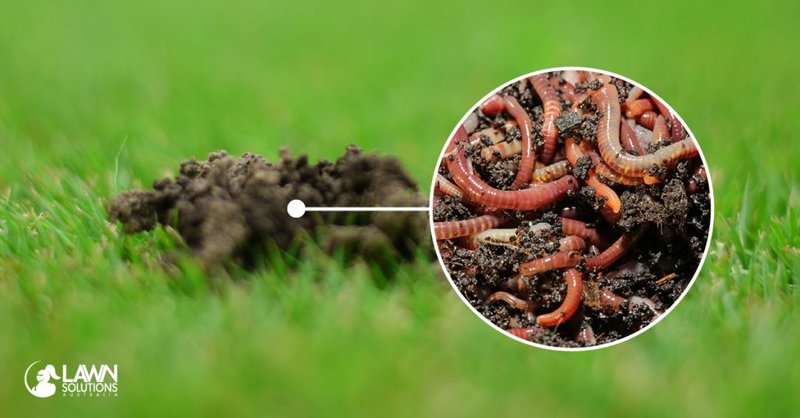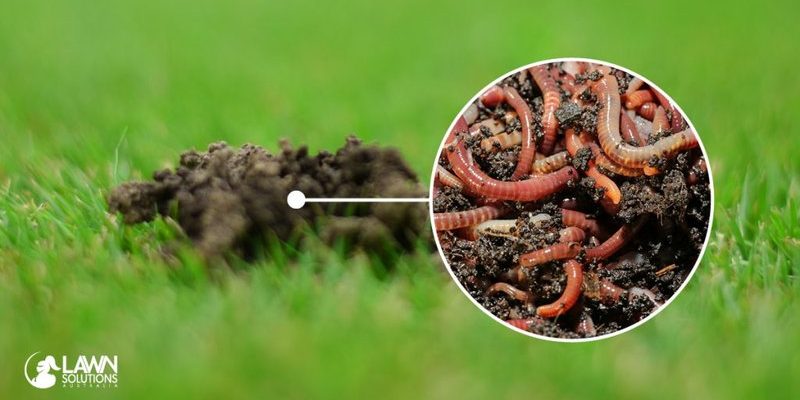
Let’s dig a little deeper into the world of earthworms in lawn care. Understanding what they do and separating fact from fiction can help you create a lush, green landscape. So, grab a drink and settle in, because we’re about to uncover the truth about these underground heroes.
Why Earthworms Are Important for Your Lawn
Earthworms might be small, but their impact on your lawn is massive. They contribute to **soil aeration**, which is kind of like getting a breath of fresh air for your grass. When they burrow through the soil, they create channels that allow water, nutrients, and oxygen to penetrate deeper. This means your lawn doesn’t just survive; it thrives!
Additionally, earthworms help break down organic matter. As they munch on decaying leaves, grass clippings, and other organic debris, they turn it into nutrient-rich castings. These castings are like **little fertilizer nuggets**, packed with essential nutrients. Not only do they enrich the soil, but they also improve its structure, making it easier for plants to establish deep roots.
Another major benefit is their role in **soil biodiversity**. A healthy population of earthworms indicates a balanced ecosystem. They contribute to the food web, supporting other organisms like birds and beneficial insects. So, by encouraging earthworms, you’re promoting a thriving environment for various life forms.
Common Myths About Earthworms
While earthworms are generally beneficial, several myths surround them that can lead to confusion. One common misconception is that all earthworms are the same. In reality, there are many species, each with unique characteristics and roles in the ecosystem. For instance, some earthworms prefer decaying matter while others are more focused on soil aeration. So, knowing which type are in your lawn can help you understand their specific benefits better.
Another myth is that having too many earthworms can harm your lawn. This notion often arises from the belief that their burrowing can cause soil to become loose. However, this isn’t true. A healthy earthworm population actually contributes more good than harm. They’ll improve drainage and prevent soil compaction, which is essential for healthy grass.
Finally, some people think that earthworms will automatically solve all your lawn problems. While they do provide numerous benefits, they are just one piece of the puzzle. Soil health also depends on factors like proper watering, nutrients, and grass type. So, relying solely on earthworms won’t guarantee a perfect lawn—think of them as part of a larger lawn care strategy.
How to Encourage Earthworms in Your Lawn
If you want to reap the benefits of earthworms, you’ll need to create a welcoming environment for them. Here are some simple steps to get started:
- **Add Organic Matter**: Earthworms love organic materials like compost, leaves, and grass clippings. Adding these to your lawn not only feeds them but also improves soil quality.
- **Avoid Chemical Fertilizers**: Pesticides and synthetic fertilizers can harm earthworm populations. Opt for organic fertilizers that are kinder to your soil life.
- **Water Wisely**: Earthworms need moisture to thrive, so make sure your lawn gets enough water, especially during dry spells. But remember, too much water can lead to flooding, which isn’t great for them either.
Creating a habitat that supports earthworms not only benefits them but helps your entire lawn flourish. Think of it like making a cozy home for your lawn’s hidden helpers!
The Role of Earthworms in Soil Health
Soil health is essential for a vibrant lawn, and earthworms are like the unsung heroes of this ecosystem. They help improve soil structure, which allows for better **root development** and nutrient absorption. Think of soil as a sponge; when it has earthworms, it can soak up more water and nutrients, leading to healthier grass.
Moreover, earthworms contribute to soil **pH balance**. Their castings can help neutralize acidic soils, creating a more favorable environment for grass. A balanced pH means that nutrients are more available to your lawn, promoting vibrant growth and color.
Finally, the physical movement of earthworms through the soil helps mix different layers. This mixing can bring nutrients from deeper soil layers closer to the surface, making them available to your grass roots. So, when you think about a healthy lawn, don’t underestimate the role of these little worms!
Identifying Earthworm Activity in Your Lawn
You might be wondering how to tell if earthworms are active in your lawn. One of the easiest ways is by looking for their castings. They appear as small, dark pellets scattered across the surface. If you see these, it’s a good sign that your lawn is hosting some earthworm friends!
Another indicator is the amount of burrowing activity. If you notice small tunnels or holes in the soil, that’s a clear sign that earthworms are hard at work. These tunnels create pathways for water and nutrients, making your lawn more resilient during dry spells.
Also, a healthy, dark, crumbly soil is often a sign of earthworm activity. Healthy soil contains organic matter and a variety of microorganisms, all of which support earthworm populations. So, take a closer look at your lawn; if it looks rich and vibrant, your earthworms are likely doing their job!
In summary, earthworms are true allies in lawn care, bringing a host of benefits that improve soil health, aid in plant growth, and enhance your lawn’s overall appearance. While myths often cloud the understanding of their role, separating fact from fiction can help you make informed choices about your lawn care practices.
By encouraging these little creatures, you’re not just creating a welcoming environment for them; you’re investing in the health of your lawn and the ecosystem. So, the next time you see one of these creatures wriggling through the soil, remember—they’re working hard to keep your grass green and strong. Embrace the earthworm advantage, and you might find yourself with the best lawn on the block!

